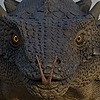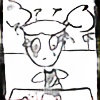HOME | DD
 VikasRao — Dragons down under
by-nc-sa
VikasRao — Dragons down under
by-nc-sa

#animals #australia #australianwildlife #biology #blender3d #digitalart #evolution #komododragon #lizard #megalania #monitorlizard #nature #palaeontology #paleoart #photoshop #prehistoric #reptile #reptiles #sciart #wildlife
Published: 2021-11-15 12:02:20 +0000 UTC; Views: 34228; Favourites: 392; Downloads: 0
Redirect to original
Description
New South Wales, Australia, 300,000 years ago.A megalania (Varanus priscus) defends its kill, a giant short-faced kangaroo (Procoptodon goliah) from a pair of Komodo dragons (Varanus komodoensis) that were attracted to the smell of the carcass.
Megalania was a giant monitor lizard (varanid) that roamed most of eastern Australia during the Pleistocene, and was arguably among the region's apex predators. Although it's exact size is a matter of debate owing to a scarcity of fossils of its postcranial skeleton, the best estimates put it at 4.5-6 m long, though if it had a long tail like the Asian water monitor (Varanus salvator) or crocodile monitor (Varanus salvadorii), it may have exceeded 7 m. Regardless, it was about as long as the average SUV making it the largest known terrestrial lizard and the largest venomous animal known to have existed. Its weight however is a little harder to estimate, given the degree of morphological variation modern varanids show. If it was a robust animal similar to the Komodo dragon, it may have weighed nearly 2 tons; if it was a gracile species similar to the modern perentie (Varanus giganteus), the largest extant Australian lizard, it would have weighed around 200-300 kg.
Although traditionally depicted as a giant Komodo dragon, it remains unclear as to whether it was indeed a close relative, and some studies have suggested that it may have been more closely related to the lace monitor (Varanus varius) or the perentie. The latter especially, possesses a distinct crest that is similar to that of megalania (albeit much smaller). The relationship between megalania and the Komodo dragon is based largely on the great size of the 2 varanids.
Although the Komodo dragon is now an endangered species found only on a few tiny Indonesian islands, the species actually evolved in Australia around 4 million years ago, and is believed to have dispersed to its current range around 900,000 years ago. At 2-3 m long, it's the largest extant lizard, though it was a midget compared to megalania. Further evidence supporting its Australian origins is a recent study that shows that at some point in time, Komodo dragons hybridised with the sand goanna (Varanus gouldii). In addition to verifying its origins, it also indicates something more interesting. Traditionally, the perentie has been considered to be more closely related to the sand goanna and Komodo dragons to lace monitors. If the 2 previously considered-to-be unrelated species were able to hybridise, it implies that megalania may well have been more closely related to extant Australian varanids than to the Komodo dragon. For all we know, it may have been a giant perentie that raced across the outback, envenomating large marsupials such as short-faced kangaroos and diprotodontids.
With armoured skin, razor-sharp teeth & claws, a venomous bite & unusually high intelligence for a reptile, it's hardly surprising that monitor lizards dominated the isolated continent of Australia until fairly recently. In fact, Pleistocene Australia was unusual in that it had few large mammalian predators compared to other continents. Reptiles such as giant varanids, land crocodiles, and giant snakes occupied a considerable number of predatory niches. Although large reptilian predators did exist on other continents (most notably South America) during the Cenozoic, these went extinct during the Miocene, whereas in Australia, they persisted until the day humans set foot on the continent.
The leading theory is that, in addition to its isolation, Australia's hot climate allowed reptiles to thrive to an extent not seen on other continents. Indeed, Australia's present reptile diversity is spectacular even compared to other tropical regions. That's not to say however that Australia had no large mammalian predators whatsoever. Predators such as thylacoleonids (marsupial lions) and thylacinids would've been more common than these giant lizards, at least if the abundance of their fossils is anything to go by. The reptiles and mammals likely avoided competing by hunting at different times: varanids are predominantly diurnal, whereas virtually all Australian predatory marsupials (including the extinct thylacine) are/were nocturnal.
The megalania and Komodo dragon both disappeared from Australia around 50,000 years ago, around roughly the same time humans arrived on the continent. Even with spears & stone axes, these ancient humans were no match for these giant lizards, but they didn't have to be.
During the Late Pleistocene, Australia's ecosystems were under severe stress due to climate change, causing megafaunal populations to decline as a result of resource shortages. When humans arrived, they began burning what little vegetation remained, destroying vast tracts of habitat to make the terrain more suitable to them. This pushed megafauna such as the giant marsupial herbivores over the edge, and without prey, the predators quickly followed suit.
The megalania died out, but luckily, the Komodo dragon survived on the islands of Flores, Komodo, Rinca, & Gili Motang. This however raises another question: why did the Australian population of Komodo dragons die out when humans arrived while their island counterparts survived?
It may have something to do with the hobbits of Flores.
Although Homo sapiens only reached Flores around the same time they reached Australia (50,000 years ago), the island was home to a population of dwarf archaic humans, Homo floresiensis, aka Flores Man or "Hobbit", which were likely descendants of a population of Homo erectus that became isolated on the island around 800,000 years ago.
This means that they reached Flores not long after the Komodo dragons did, and over the course of millennia, the giant varanids learned to hunt and avoid being hunted by these pint-sized humans. Indeed, modern Komodo dragons have been known to prey on humans should the opportunity present itself.
Coexisting with Homo floresiensis may have prepared these island-dwelling dragons for the arrival of the more destructive Homo sapiens, whereas their counterparts in Australia had no such preparation, and the sudden arrival of a predatory primate that used fire to burn everything in sight may have just been too much to adapt to in such a short span of time.
The real irony here is that, although these lizards are often called dragons, in reality, it was humans that wiped out the dragons' homes with fire.
Related content
Comments: 20

👍: 3 ⏩: 0

👍: 3 ⏩: 1

👍: 1 ⏩: 0

👍: 1 ⏩: 0

👍: 1 ⏩: 1

👍: 0 ⏩: 0

👍: 1 ⏩: 1

👍: 2 ⏩: 0

👍: 1 ⏩: 1

👍: 2 ⏩: 1

👍: 0 ⏩: 0

👍: 2 ⏩: 1

👍: 1 ⏩: 1

👍: 1 ⏩: 1

👍: 0 ⏩: 0

👍: 1 ⏩: 1

👍: 0 ⏩: 1

👍: 0 ⏩: 0

















